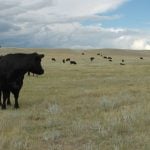When speaking with my farming colleagues from France, they often reflect a worry for their industry. It is not that the French don’t love to eat — non — they continue to flaunt their gastronomic flair. Nor is it because they don’t fancy trade, as the largest producer of agricultural products in the EU they are aggressive traders and have an agri-food trade balance. Farm subsidy through the Common Agricultural Policy (CAP) has kept French farms and landowners in cash since 1962. They do, however, try to thrive under a system of intense environmental requirements.
Read Also

Behind Maple Leaf Foods’ bold call to become carbon neutral
Maple Leaf Foods is not just pretending to be environmentally friendly, it is trying to be a trailblazer in the…
The farming population in France is aging, as it is in Canada. Young farmers are creative and enthusiastic but are realistic in terms of their longevity in the industry. Many will tell you on site that the life span of their farm is in 10-year blocks because of environmental pressure and CAP reform. Cross compliance to the environmental regulations within CAP are now tied directly to farm payments.
Now ratified, CAP did not begin to address environmentalists’ concerns and they continue to protest loud and clear across France. So much so that violent clashes are now costing lives among protesters and police. Political parties are lining up to take credit for environmental support — they know where the votes are.
As I have discovered in my travels, most land from a global perspective is leased, not owned, by farmers. French farmers must abide by mandatory environmental regulation while the benefit may still go to the church, the royal family or some other land owner. Environmentalists continue to block agricultural improvements such as the dam on the Tescou River for irrigation and fight for greater areas for wildlife, less waste, no GMO crops and the elimination of herbicides and pesticides.
- More ‘Straight From the Hip’ with Brenda Schoepp: What is the point?
Politicians have listened and France leads the promotion of organic farming and “high-value environmental agriculture.” The squeeze is tight enough that meat imports are taking the place of traditional beef in French meat dishes. The 13 million hectares of land used for grass-fed beef production in France is being eyed by some as a source of pollution and farmers are faced with an ever-diminishing palate for beef.
Chefs have played a role in bringing back sense and sensibility to the discussion by reviving French cuisine. A typical lunch of steak and salad is now not as common but there is leadership from the higher-end establishments. This concept of the chef leading the charge is getting to be a new wave in the religion of food. A few years ago chefs in Australia started importing Longhorn cattle for the meat quality and the newly released book The Third Plate brings to life the role of the chef in farming and the environment. This is exciting for food and for farmers. Having the leading chef onside is like a Billy Graham revival for beef.
It is good for France because it allows for alignment between farmer and end-user to a greater degree which should, in a secondary way, remove extra environmental pressure.
Don’t get me wrong, I strongly advocate for environmental consciousness and responsibility by farmers. There is always room for improvement but we need more than ourselves as farmers in the voting box when it comes to making Canadian food happen and we would benefit from being ahead of environmental regulation. New policy is best when it is collaborative in nature and inclusive to all aspects of production from water through to end-user.
Best production practises are a common adaptation in Canada by beef and other primary industries. It is a good time to keep our eye on the environmental file and not be lulled by the current federal diversion from it. We don’t want to be like France, supported to the point of overproduction, with every decision tied to a regulation that we did not create or have an equal say in.
Julie Child once said that the only time to eat diet food was while waiting for the steak to cook. Traditional recipes were heavy on presentation and taste and that trend is coming back around in many parts of the world. But there are two catches to the end of the story. As immigration increases worldwide, those principle beef dishes are being tossed for a vegetable-based meal so the competition for beef to be at the centre of the plate continues to heat up. And second, the cost of extreme environmental regulation must be carried by the product. And that may put some cuts out of reach. This differs from sensible environmental practice which will over time reduce costs and increase production as soil health improves.
There is a French connection to Canadian farmers. We both live in extremely beautiful countries with a great history of beef on the menu. We both face environmental challenges every day with an ever-aging farming population and a general population who does not remember where food comes from. We both have a diverse cultural shift occurring in food and are outspoken when someone crosses our boundaries on policy.
Our difference in Canada is that we have a say in how environmental policy is shaped and we have the opportunity to nurture another generation of men and women who farm with environmental consciousness on their terms. And we can do this without draining the public purse. That means the consumer and the chef and the public can be our friends. You could not ask for anything more.
Brenda Schoepp is a motivating speaker and mentor who works with young entrepreneurs across Canada and around the world. She can be contacted through her website www.brendaschoepp.com. All rights reserved. Brenda Schoepp 2014















